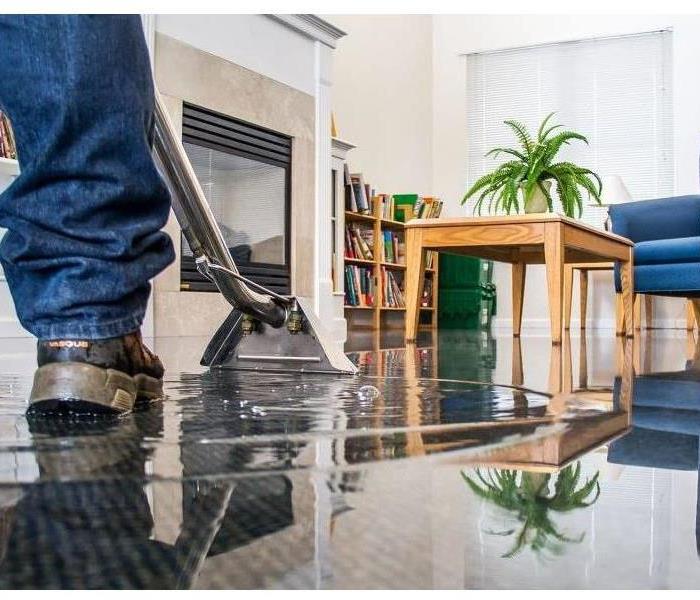Lets Talk About Water Removal Equipment and Practices
1/5/2022 (Permalink)
 Our Technicians are highly trained to employ the correct equipment and procedures to dry your home or business.
Our Technicians are highly trained to employ the correct equipment and procedures to dry your home or business.
Water intrusion into a building can happen in many ways. Removing the water from the building fast is crucial after such an incident to restore normalcy and prevent secondary damages. The level of difficulty varies in each case of water removal depending on whether there are crawlspaces, stairwells, and basements, or whether the water reaches into wall cavities or HVAC systems.
The method chosen for water removal from affected properties depends on the amount of water and the types of surfaces. We train our SERVPRO crews with different removal procedures including;
- Wet vacuuming
- Pumping
- Draining
- Absorption with towels and mops
Wet vacuuming requires an extractor with enough lift capacity. Truck-mounted extractors provide such lift when dealing with a vast area. Our SERVPRO technicians also use portable extractors to remove water localized in smaller spaces or when dealing with hard to reach areas. Wet vacuuming is suitable for all floor types. Our technicians use carpet wands for carpeted areas and squeegee wands for wooden or other hard floors to avoid damaging the surfaces.
Pumping helps remove water from the affected property. Pumping is perfect for eliminating high volumes of standing water before starting wet vacuuming. It is, therefore, appropriate for areas such as basements where considerable amounts of water accumulate. For better efficiency, our SERVPRO technicians use submersible pumps when standing water is more than 2 inches.
Some of the water that intrudes into the house might end up trapped in unusual areas such as the ceiling, HVAC duct lines, wall cavities, or within a concrete block. The best way to remove such water is by draining it because, in most cases, there is no access for tools to extract the water. Our SERVPRO technicians apply different methods to drain the water. For example, we can drill ¼-inch weep holes on a ceiling panel or concrete block to release the trapped water.
Fast and efficient removal of water from a building helps prevent severe damages. Call SERVPRO of West Orange at (407) 352-1569 to help. We’re Faster To Any Size Disaster.






 24/7 Emergency Service
24/7 Emergency Service